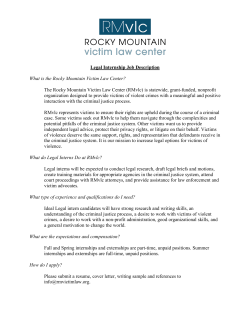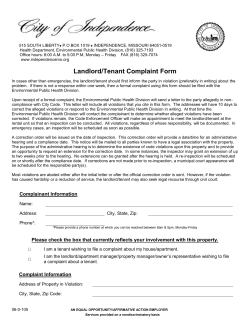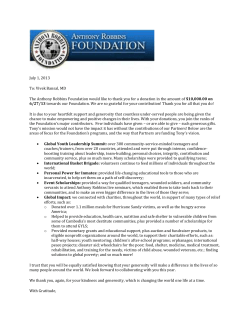
Q: What is Republic Act No. 10368? A. RA 10368 is the ''Human Rights Victims Reparation and Recognition Act pf 2013". Through this law, the State:
Q: What is Republic Act No. 10368? A. RA 10368 is the ''Human Rights Victims Reparation and Recognition Act pf 2013". Through this law, the State: a. Recognizes the heroism and sacrifices of human rights violations victims (HRVVs) during the regime of former President Ferdinand E. Marcos covering the period from September 21, 1972 to February 25, 1986; and b. Acknowledges its moral and legal obligation to recognize and provide reparation to the victims. The Human Rights Victims Claims Board (HRVCB), a quasi‐judicial body, was created to receive, evaluate and process claims, award reparation, and recognize the victims by enshrining their names in the Roll of Human Rights Violations Victims Q: Who may apply? A: a. A person who is a human rights violation victim (HRVV) as defined by the law; b. Claimants who are conclusively presumed to be HRVV under the law; c. Legal heir/s, or authorized representative of HRVVs who are deceased, incapacitated, or involuntary disappeared. To be considered an HRVV, the human rights violation/s must be among these enumerated in the following table and committed by persons acting in an official capacity and/or agents of the State during the period from September 21, 1972 to February 25, 1986. Violations committed one (1) month before and (1) month after these dates are included, provided that they were committed: a. By agents of the State and/or persons acting in an official capacity; b. For the purpose of preserving, maintaining, supporting or promoting the said regime; or c. To conceal abuses during the Marcos regime and/or the effects of Martial Law. The claimants who are conclusively presumed to be HRVVs are 1) the class suit and direct action plaintiffs in the Human Rights Litigation Against the Estate of Ferdinand E. Marcos in the US Federal District Court of Honolulu, Hawaii who won a favorable judgment, and 20 the HRVVs recognized by the Bantayog ng mga Bayani Foundation. Q: What are the human rights violations (HRVs) covered and how many points are assigned to them? A: Human Rights Violations Points Killing of persons exercising their civil and political rights; 10 points Involuntary disappearance (still missing) as defined in Republic Act No. 1035(3), otherwise known as the “Anti‐Enforced or Involuntary Disappearance Act of 2012”; Torture, as defined by the Republic Act No. 9745, otherwide 6‐9 points known as the “Anti‐Torture Act of 2009”, and/or rape or sexual abuse; Detention, (meaning the act of taking a person into custody 3‐5 points against his will by persons acting in an official capacity and/or agents of the State, as is commonly understood under pertinent penal laws), without a valid warrant of arrest issued by a civilian court of law, including: a. Any warrantless arrest or detention carried out pursuant to the declaration of Martial Law, and b. Any arrest, detention or deprivation of liberty on the basis of an “Arrest, Search and Seizure Order” (ASSO), a “Presidential Commitment Order” (PCO)or a “Preventive Detention Action” (PDA) and such other similar executive issuances, c. Or in any manner that the arrest, detention or deprivation of liberty was affected; Force or intimidation causing involuntary exile from the 1‐2 points Philippines Force, intimidation or deceit causing unjust or illegal takeover of 1‐2 points business, confiscation of property, detention of owner/s and/or their families, deprivation of livelihood of a person by agents of the State including those caused by Ferdinand E. Marcos, his spouse Imelda R. Marcos, their immediate relatives by consanguinity or affinity, their immediate and close relatives, associates, cronies, and subordinates; Kidnapping or otherwise exploiting children of persons suspected 1‐2 points of committing acts against the Marcos regime; Sexual offenses committed against human rights victims who are detained and/or in the course of conducting military and/or police operations; and Other similar ir analogous violations. Q: Where should the HRVVs/claimants file their applications? A. Applications must be personally filed with the Secretariat of the Board at its main office at the University of the Philippines Institute for Small Scale Industries, E. Jacinto Street, Quezon City, or at on‐site/satellite intake offices to be designated. Q: When should the application is filed? A: The claims must be filed from May 12, 2014 to November 10, 2014. Failure to file within this period is deemd a waiver of the claim. Q: Is there a fee for the filling of applications? A: There is no fee for the filling of applications or appeals. The Board has not authorized any individual or organization to receive applications or appeals, collect fees or to act on its behalf. Q: What documents are needed? A: The applicant shall submit the following to support eligibility as a claimant: a) Application Form; b) Detailed notarized statement of the human rights violation; c) Proof of filiation and relationship issued by the National Statistics Office (NSO) of Office of the Local Civil Registrar. In the absence thereof, affidavits of at least two (2) disinterested individuals; d) In case the HRVV is physically incapacitated to file the application personally, a notarized authorization showing proof of identity of the authorized representative and his/her bona fide relationship with the victim; e) In case of mental or psychological disability of the HRVV, proof of filiation and relationship of the nearest next of kin in accordance with the Civil Code provisions on succession issued by the NSO or Office of the Local Civil Registrar. Q: What are needed to prove the HRV? A: To prove the HRV, the applicant shall submit one or more of the following: a) NSO‐issued or local death certificate; b) Warrant of arrest, seizure orders (PDA, PCO, ASSO), mission order and other similar documents; c) Certification by custodial government agencies on the fact of detention, carpeta, police blotter, NBI files, release papers and other similar documents; d) Doctor’s affidavit, medico‐legal, autopsy or pathology certificate or report, and other similar documents; e) Declassified documents from the Department of national Defense and other government agencies; f) Court records; g) Original or duly certified lawyer’s records; h) Photographs with affidavit of proper authentication; i) Sworn statement of two (2) co‐detainees or two (2) persons who have personal knowledge of the circumstances surrounding the HRV; j) Secondary sources of information from reliable sources may be presented such as church/non‐government organization report, books documenting HRVs, news clippings or other similar documents; k) Other documents and evidence attesting the occurrence of the incident and violations or that may be required for the award of any reparation. Q: What is the procedure for filling of application? A: Step 1 – Accomplish application form and attach notarized statement about the Human Rights Violation/s, together with other documents to support eligibility and proof of human rights violations. See list of documents in Nos. 7 & 8. Step 2 – Submit application and documents to the receiving section of the Secretariat. Complete applications will be referred to the encoding section. Incomplete applications will be returned to applicant for completion. Step 3 – Applicant’s photograph and fingerprint will be taken. Acknowledgement Receipt will be issued, to be used for identification, for tracking claims and for receiving reparation. Q: What happens after the applications are filed? A: a) The Board will evaluate each individual claim and decide on eligibility to monetary reparations. receive b) The preliminary list of eligible claimants will be published to give opportunity for the filling of opposition and/or appeal. c) The final list of eligible claimants will be published after all oppositions and/or appeals have been received. d) The monetary award per claim will be determined within thirty (30) days from publication of the final list of HRVVs. Q: When will monetary reparations be distributed? A: After the monetary award for all claims has been finally determined, distribution shall be scheduled by the Board and each claimant shall be duly notified of the details for delivery of monetary reparations due him/her. Q: Where can I get an application form? A: You may get a copy of an application form duly issued by the Board at its office or at on‐site satellite offices to be designated later: Human Rights Victims’ Claims Board E. Virata Hall, E. Jacinto St. UP Diliman, Quezon City E‐mail: secretariat@hrvcb.gov.ph Q: What are prohibited acts and what are the penalties for commission? A: Prohibited Acts Penalties Filing of a fraudulent, fictitious or spurious Imprisonment of eight (8) to ten (10) claim by any claimant. years, Disqualification from public office and employment and Deprivation of the right to vote and be voted for in any national or local election, even after the service of sentence unless granted absolute pardon. Misuse, embezzlement or misappropriation Penalty under the Revised Penal Code and of reparation funds by any member of the relevant special penal laws. Board, its Secretariat, public officer, employee of an agency or any private individual mandated to implement the Act Commission of fraud in the processing of Penalty under the Revised Penal Code and documents and claims of HRVVs, or relevant special penal laws conspiracy with any individual to commit the same by any member of the Board, its Secretariat, public officer, employee of an agency or any private individual mandated to implement the Act __________0___________
© Copyright 2025



















